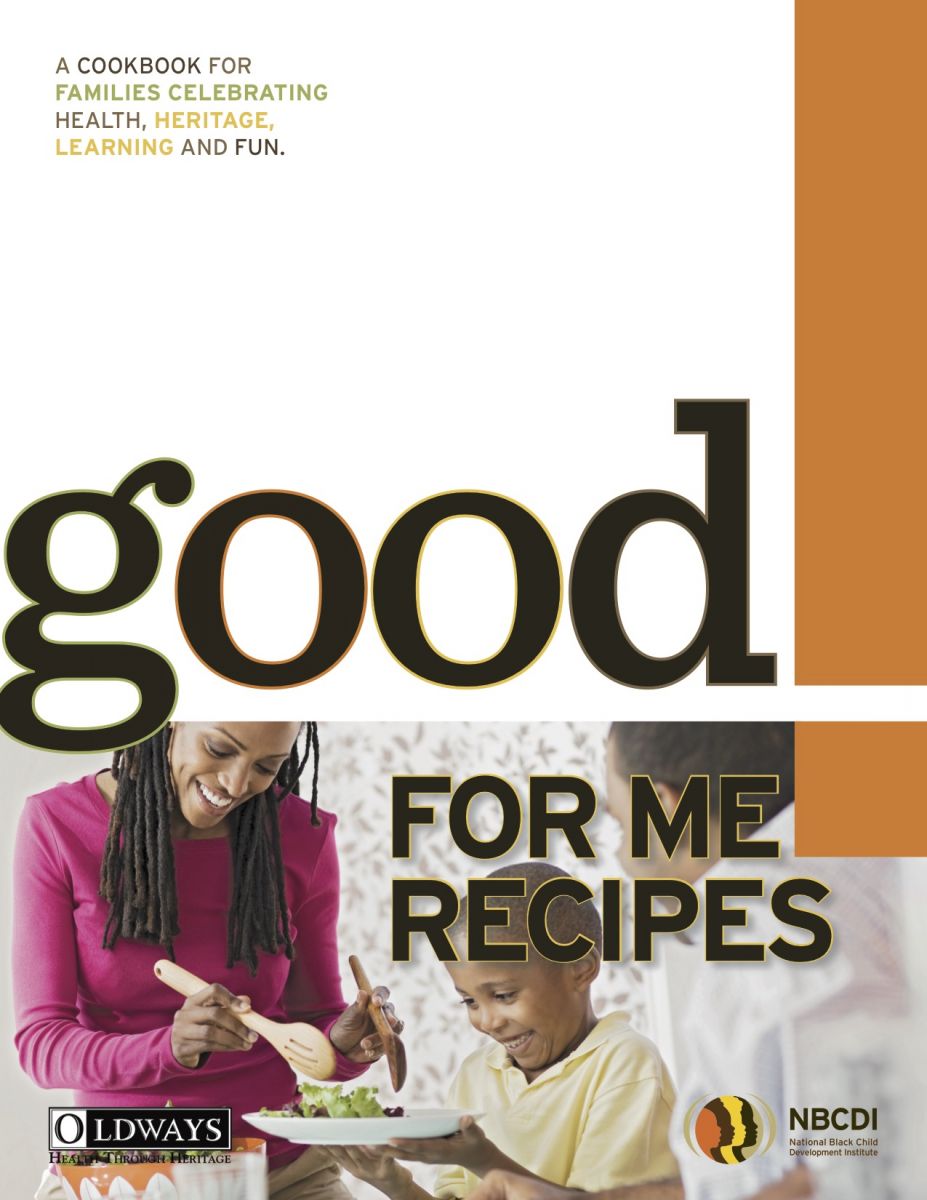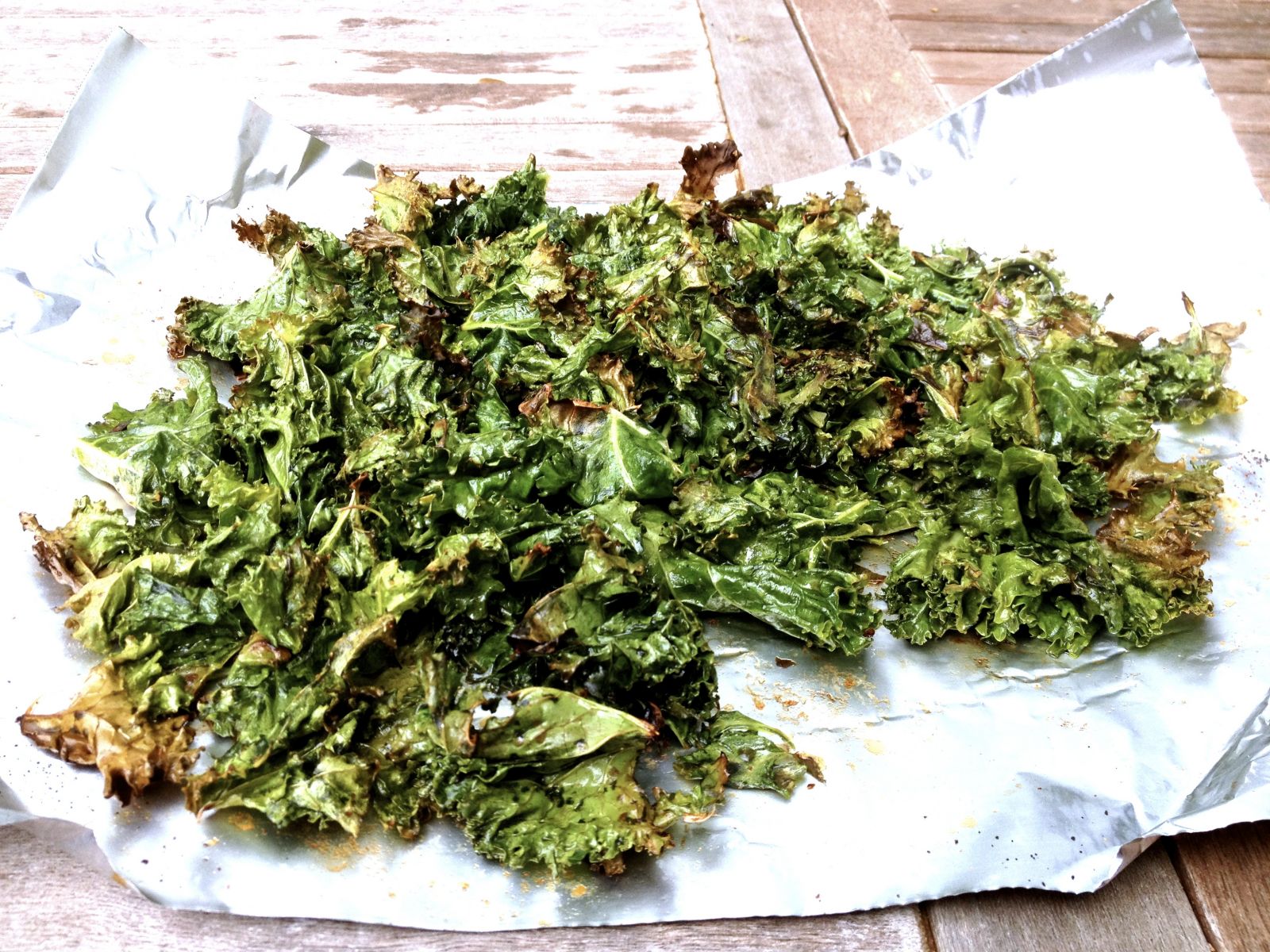Share This
What if, as a parent or mentor, you had the tools to teach your child about nutrition, history, culture, language, math, and science — all while preparing an easy, healthy meal together? This is the kind of experience that Oldways and the National Black Child Development Institute (NBCDI) set out to create with our Good For Me Recipes cookbook.
We are living in a time when improving childhood nutrition is of critical importance. The Surgeon General has warned that our children may be the first generation to be less healthy and have a shorter life expectancy than their parents. The 2012 documentary, A Place at the Table, reveals the realities of malnutrition and hunger faced every day by families and school children in America (a definite must-see if you haven’t yet). The bottom line solution, once again, is incorporating more fruits, vegetables, and other whole foods into the daily diets of children everywhere. And to succeed we need tangible, affordable, and appealing avenues to get there.
One of the best ways to promote healthy eating habits among kids is to cook with them. Traditionally, families have prepared meals together for generations, passing recipes and cooking techniques down from the elders to the youth and so on. Cooking with a child is a rich and joyful experience. Not only is it a wonderful way to bond, but it helps to create the foundations of a healthy life. Depending on how much time you have, you can give kids many jobs or just one cooking task per meal. Breaking pasta over a pot, tearing leafy greens off of stems, and even stirring vegetables all go a long way towards connecting children with healthy foods.
The culturally rich Good For Me Recipes collection shares 26 recipes — one for each letter of the alphabet — that all incorporate healthy traditional foods and educational talking points to share with your little helper. The book promotes positive nutrition for children and families, helps families budget for each recipe, and teaches about cultural food traditions from parts of the African diaspora, the Mediterranean, Asia, and Latin America.
The Good For Me Recipes book is now available in the Oldways Webstore. Here’s a sneak preview of one of our favorite entries from the book.
The Letter K: Kale
Kale is said to be one of the healthiest vegetables on the planet! The nutrients and vitamins that are found in kale can help to lower cholesterol, and may help to lower the risk of some cancers.
Toasted Kale Bites
We know everyone loves the crunch of chips; and, to make healthy, great tasting chips (while saving money), you can use tubers (like jicama) or leafy greens!
These toasted kale chips can be eaten as a snack or added to a salad for extra flavor.
Ingredients
2 bunches of curly kale
1 tablespoon extra virgin olive oil
1 tablespoon low-sodium soy sauce
1 teaspoon garlic powder
Prep Time: 10 minutes
Bake Time: 15-20 minutes
Directions
Preheat your oven to 375° and lightly coat a baking sheet or foil with olive oil. First, rinse your kale and pat dry with a paper towel. It’s okay if there’s a little moisture, but for the leaves to get really crispy, you don’t want them wet. Then, tear the leaves from their stems, in big bite size pieces (a good job for a little one!). In a large bowl, toss the kale leaves with the olive oil and soy sauce. Massage the leaves between your hands until every leaf is covered with the dressing. Lay the kale leaves out on your baking sheet or foil (it’s okay if they overlap), and sprinkle with garlic powder. Bake in the oven for about 15 minutes, or until most of the leaves are crisp to touch. Serve hot or cold, and enjoy!
Serves: 4
Nutritional Analysis: Calories: 101, Fat: 4g, Saturated Fat: 1g, Sodium: 191mg, Carbohydrate: 14g, Fiber: 3g, Sugars: 0g, Protein: 5g
Price Out:
2 bunches of curly kale: $3.96
1 tablespoon olive oil: $0.16
1 tablespoon low-sodium soy sauce: $0.12
1 teaspoon garlic powder: $0.16
Total Recipe Price: $4.40
Building Skills & Knowledge
As you create this dish with your family, take a moment to talk about the star ingredient, kale! Feel free to engage your children in a discussion about the information below.
Culture and Geography
- Like broccoli, Brussels sprouts, cauliflower, and collard greens, kale is a descendent of the wild cabbage, a plant thought to have originated in Asia Minor, which is the present day Asian peninsula of Turkey in the Middle Eastern and Mediterranean region of the world.
- Is there a Middle Eastern presence in your community? Identify and explore events, stores, and restaurants in your community that reflect Middle Eastern heritage. Talk with your child about the differences in foods from the Middle East that your family enjoys.
Language
- Take your children to the farmer’s market to purchase the kale for your chips. Explain the importance of eating multiple servings of green leafy vegetables daily. Play a few rounds of the “I spy” guessing game focusing on the color green and/or leafy textures. Take turns with your child describing and guessing different fruits & vegetables that fall into one of those categories.
Science
- Suggest to your children that you grow your own. It is very easy to grow in container or raised bed. It also has a long growing season and can grow in colder temperatures where a light frost will produce sweet kale leaves. Seeds can be purchased from a local gardening nursery for less than the price one bunch of kale.
Sensory & Language
- When shopping for kale, explore the different varieties available including curly kale, ornamental kale, and dinosaur (or Lacinato or Tuscan) kale, all of which differ in taste, texture, and appearance. Choose a few to take home for a tasting party. Have your child help you wash the leaves while describing the similarities and differences in appearance and texture. Let them taste and smell the raw kale and have them choose their favorite. Be sure to use new vocabulary words such as ruffled, bitter, mild and veins during your kale investigation & sampling.
- Ask your children to tell you why they think the Lacinato is also called dinosaur kale and have them explain how the texture and color reminds them of a real dinosaur.
Want to do more?
- There are many ways that you can use kale — it can be used in almost any dish! Add kale to your pasta pot for the last 5 minutes of boiling, and serve. Add steamed kale to your scrambled eggs, sandwiches, tacos, macaroni, or soups.
- If you massage kale with a little olive oil, lemon juice, and sea salt for 5-8 minutes, you’ll notice that it gets much softer and easier to enjoy as a salad.
Or, try these?
Kiwi is another fun “K” ingredient, and perfect for a summer lunch. While you can eat the fuzzy skin, many people prefer not to. Peel one or two in the morning, slice into thin rounds, and pack in an airtight container for lunch. You can add them into your smoothies, or enjoy them as an after-dinner snack. Studies have shown kiwis to be especially helpful for sleep — both falling and staying asleep!



Add a Comment